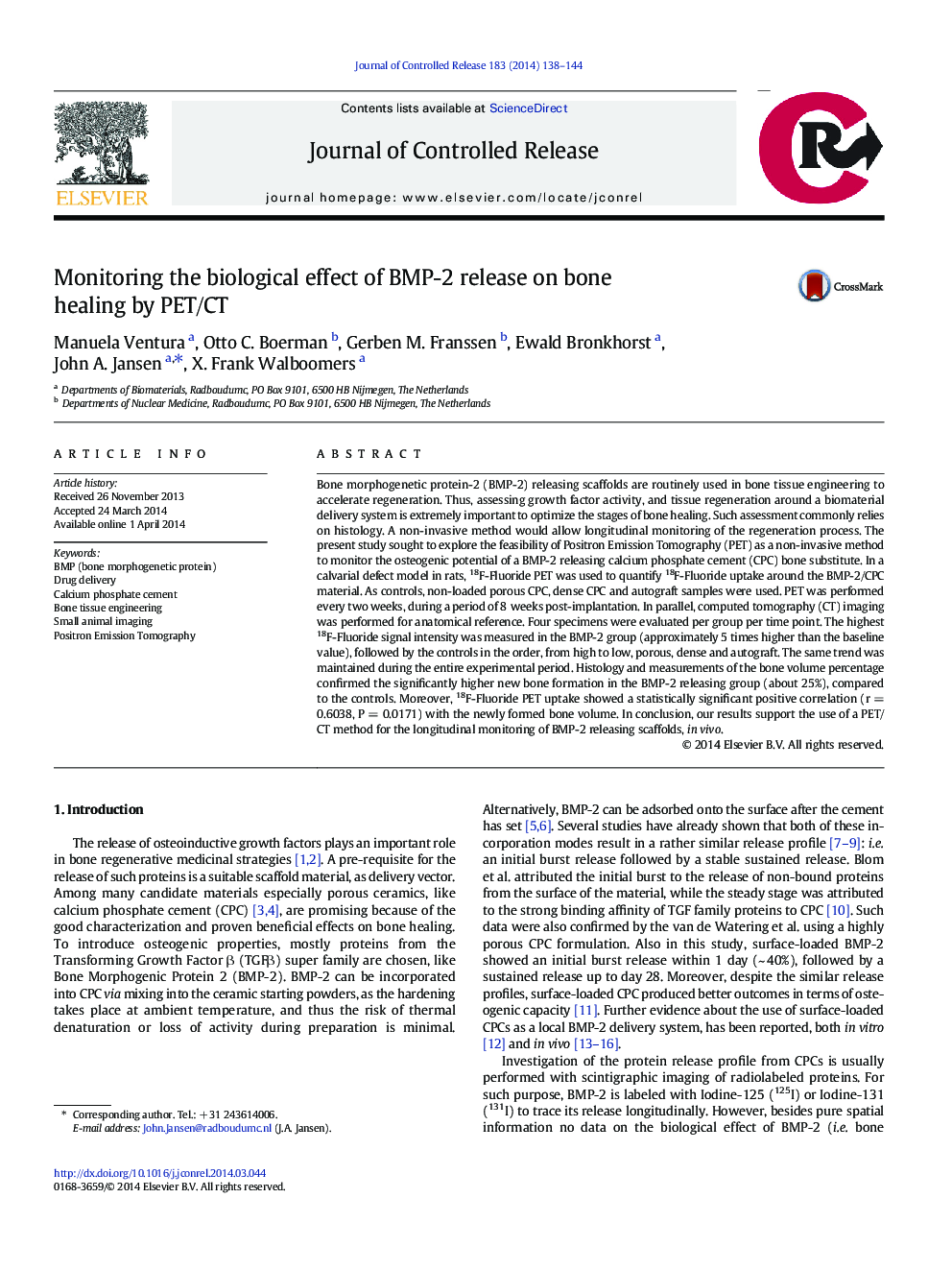| کد مقاله | کد نشریه | سال انتشار | مقاله انگلیسی | نسخه تمام متن |
|---|---|---|---|---|
| 1424004 | 1509066 | 2014 | 7 صفحه PDF | دانلود رایگان |

Bone morphogenetic protein-2 (BMP-2) releasing scaffolds are routinely used in bone tissue engineering to accelerate regeneration. Thus, assessing growth factor activity, and tissue regeneration around a biomaterial delivery system is extremely important to optimize the stages of bone healing. Such assessment commonly relies on histology. A non-invasive method would allow longitudinal monitoring of the regeneration process. The present study sought to explore the feasibility of Positron Emission Tomography (PET) as a non-invasive method to monitor the osteogenic potential of a BMP-2 releasing calcium phosphate cement (CPC) bone substitute. In a calvarial defect model in rats, 18F-Fluoride PET was used to quantify 18F-Fluoride uptake around the BMP-2/CPC material. As controls, non-loaded porous CPC, dense CPC and autograft samples were used. PET was performed every two weeks, during a period of 8 weeks post-implantation. In parallel, computed tomography (CT) imaging was performed for anatomical reference. Four specimens were evaluated per group per time point. The highest 18F-Fluoride signal intensity was measured in the BMP-2 group (approximately 5 times higher than the baseline value), followed by the controls in the order, from high to low, porous, dense and autograft. The same trend was maintained during the entire experimental period. Histology and measurements of the bone volume percentage confirmed the significantly higher new bone formation in the BMP-2 releasing group (about 25%), compared to the controls. Moreover, 18F-Fluoride PET uptake showed a statistically significant positive correlation (r = 0.6038, P = 0.0171) with the newly formed bone volume. In conclusion, our results support the use of a PET/CT method for the longitudinal monitoring of BMP-2 releasing scaffolds, in vivo.
Figure optionsDownload high-quality image (96 K)Download as PowerPoint slide
Journal: Journal of Controlled Release - Volume 183, 10 June 2014, Pages 138–144